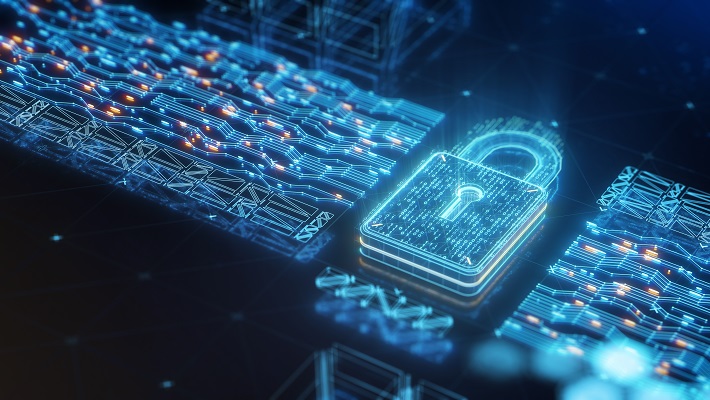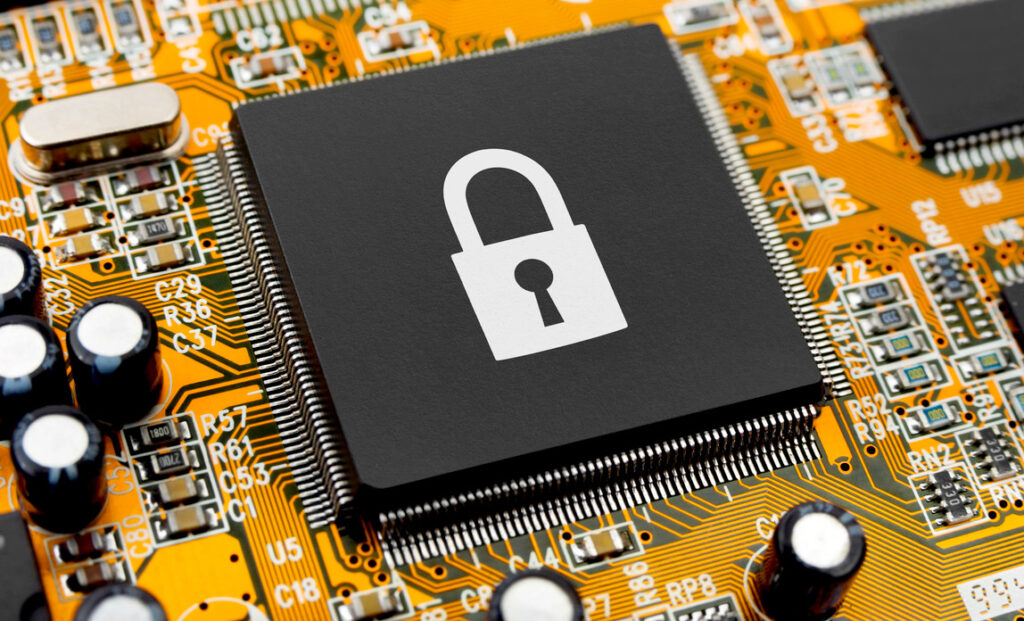The Role of Encryption in HIPAA-Compliant eFax and How It Helps Protect Patient Data

eFax has grown in popularity in recent years. However, users should be aware of the privacy and security concerns when using eFax.
On the other hand, eFax is a secure, digital solution that allows healthcare practitioners to quickly and easily send and receive information. It is commonly used at clinics, hospitals, and other medical institutions, but individuals in different sectors may also utilize it.
Furthermore, eFax is a HIPAA-compliant fax service, as long as consumers have a signed Business Associate Agreement (BAA) with eFax before using their service. eFax controls around 39% of the online fax industry, with the healthcare sector accounting for 60% of its corporate income.
However, in compliance with the Health Insurance Portability and Accountability Act (HIPAA), eFax that is HIPAA compliant is crucial in preserving the security and confidentiality of electronically protected health information (ePHI).
That being said, let’s get into our main topic since we’ll go over all you need to know about HIPAA-compliant efax, its role in the healthcare industry, how it helps secure patient data, its importance, and much more. So, without further ado, let us begin!
What is Encryption

Source: kaspersky.com
Encryption protects electronic data’s confidentiality, integrity, and security by making it unreadable to anybody who does not have the key. In short, it prevents unauthorized access to information.
There are two encryption types available: symmetric-key encryption and public-key encryption.
In symmetric-key encryption, the same key is used to encrypt and decrypt the data.
This encryption method is relatively quick, but both the sender and the recipient must have access to the same key.
Public-key encryption, on the other hand, employs a pair of keys, one of which is used to encrypt the data and the other to decrypt it.
Although slower than symmetric-key encryption, this method does not need the sender and recipient to share a key. Instead, the sender encrypts the data with the receiver’s public key, and the recipient decrypts it with their private key.
As a result, the main difference between symmetric and public key encryption is that symmetric key encryption utilizes the same private key. In contrast, public key encryption uses both a public and a private key.
Encryption is commonly used to secure electronic communications, such as emails and messaging apps, and to protect the confidentiality of sensitive data, such as financial transactions and personal information.
It is also used to secure data stored on electronic devices, such as laptops and smartphones, to prevent unauthorized access.
In addition to protecting the confidentiality of data, encryption can also help to ensure the integrity of the data by adding a checksum or digital signature to the encrypted data.
This helps to ensure that the data has not been tampered with or altered during transmission.
Overall, encryption is an essential tool for protecting electronic data and ensuring the security of electronic communications.
Ways Encryption Protects Data

Source: techdonut.co.uk
There are several ways encryption may protect data. This section will go through the five ways encryption can protect data.
Meanwhile, we must be aware that encryption scrambles ordinary information, such as text messages or emails, into an unreadable format known as “cipher text.”
This contributes to the confidentiality of digital data kept on computer systems or communicated across the Internet.
Confidentiality
Encryption protects data confidentiality by converting it into a coded form that someone with the appropriate decryption key can only view. This makes it more difficult for unauthorized parties to access or read the data.
Integrity
By adding a checksum or digital signature to the encrypted data, encryption can assist in ensuring data integrity. This ensures that the data was not tampered with or changed during transmission.
Security
Encryption helps to safeguard data by making it unreadable to anybody without the right decryption key. This can assist in protecting sensitive data, such as financial transactions or personal information, from unauthorized access.
Data Protection
Encryption can assist in securing data stored on electronic devices like computers and smartphones by rendering it unreadable to anybody who does not have the correct decryption key. If the device is lost or stolen, this can help to prevent unwanted access to the data.
Network Security
Encryption may also secure data transferred across a network, such as the Internet, by turning it into a coded format that someone with the required decryption key can only view. This can assist in preventing illegal data access during transmission.
The Role of Encryption in HIPAA-complaint eFax

Encryption is a technology that helps protect patient data from unauthorized access. By encrypting all of the data being sent and received, eFax helps ensure that your patients’ information remains safe and private.
Encryption is an essential aspect of HIPAA-compliant eFax systems because it helps protect the confidentiality, integrity, and security of electronically protected health information (ePHI).
When ePHI is transmitted via eFax, it is vulnerable to being intercepted and accessed by unauthorized individuals.
Encryption helps prevent this by converting the ePHI into a code that only someone with the proper decryption key can access.
Furthermore, SSL encryption protects online faxes safe from third-party web cyberattacks and data-privacy breaches. Faxing documents with SSL or secure sockets layer encryption implies that data is sent to a gateway secured by 128-bit Advanced Encryption Standard (AES) data encryption or even higher.
HIPAA requires that ePHI be encrypted when transmitted over an electronic network or stored on an electronic device. This includes eFax transmissions. By using encryption, HIPAA-compliant eFax systems can help ensure that ePHI is protected from unauthorized access or disclosure.
In addition to encryption, HIPAA-compliant eFax systems should also have other security measures in place to protect ePHI, such as authentication, access controls, and regular security audits.
These measures help to ensure that ePHI is only accessed by authorized individuals and that the system is secure against potential threats.
Importance of Encryption in HIPAA-complaint eFax

Source: updox.com
HIPAA-compliant eFax systems are important in the healthcare industry because they help to ensure the confidentiality and security of protected health information (PHI) when it is transmitted electronically.
The Health Insurance Portability and Accountability Act (HIPAA) requires covered companies and their business associates to place appropriate security to ensure the confidentiality, integrity, and availability of protected health information (PHI).
One of the measures that can be employed to achieve these standards is encryption. PHI is subject to interception and unauthorized access when sent electronically.
Encrypting data helps to prevent unauthorized parties from reading or accessing the information. This is especially essential when delivering PHI via eFax, as fax communications might be intercepted or read by unauthorized persons.
To be HIPAA-compliant, eFax systems must use encryption that meets the requirements outlined in the HIPAA Security Rule.
This typically means using encryption algorithms certified by the National Institute of Standards and Technology (NIST) to meet specific standards for data security.
HIPAA Encryption Requirements for Electronic Patient Health Information

Source: letscale.com
According to the HIPAA Security Rule, covered organizations and business associates must employ encryption to secure electronic PHI (ePHI) when data is sent over an electronic communications network. This includes sending ePHI over email, fax, or other electronic means.
HIPAA provides three fundamental standards for the protection of patients and their personal information, and they are;
The privacy rule specifies how protected health information and documentation should be handled.
The breach notification rule outlines how your business must notify authorities and patients following a security breach.
And lastly, the security rule specifies security criteria for the storage and transfer of ePHI.
Several requirements must be met for encryption to be considered adequate for HIPAA purposes:
- The encryption must use an algorithm certified by the National Institute of Standards and Technology (NIST) to meet specific standards for data security.
- The encryption must be applied to ePHI in a manner consistent with the HIPAA Security Rule requirements.
- The encryption must be implemented to be compatible with the systems and devices that transmit and receive the ePHI.
Conclusion
In summary, encryption plays a critical role in HIPAA-compliant eFax systems. As the healthcare industry increasingly relies on electronic means of communication, it is important to ensure that protected health information (PHI) is transmitted securely and confidentially.
As previously said, it is important to remember that the Health Insurance Portability and Accountability Act (HIPAA) demands that covered organizations and their business associates put in place appropriate measures to protect the confidentiality, integrity, and availability of PHI, and encryption is one of the options available to satisfy these criteria.
In addition, HIPAA-compliant eFax systems must use encryption algorithms that have been certified by the National Institute of Standards and Technology (NIST) as meeting certain standards for data security. This helps to prevent unauthorized access or interception of PHI as it is transmitted electronically.
Encryption, on the other hand, is essential when delivering PHI via eFax, because fax communications can be intercepted or viewed by unauthorized persons.
Overall, encryption is required for HIPAA compliance in the eFax environment.
It contributes to the confidentiality and security of PHI while also ensuring that covered businesses and business associates are fulfilling their HIPAA legal responsibilities.
